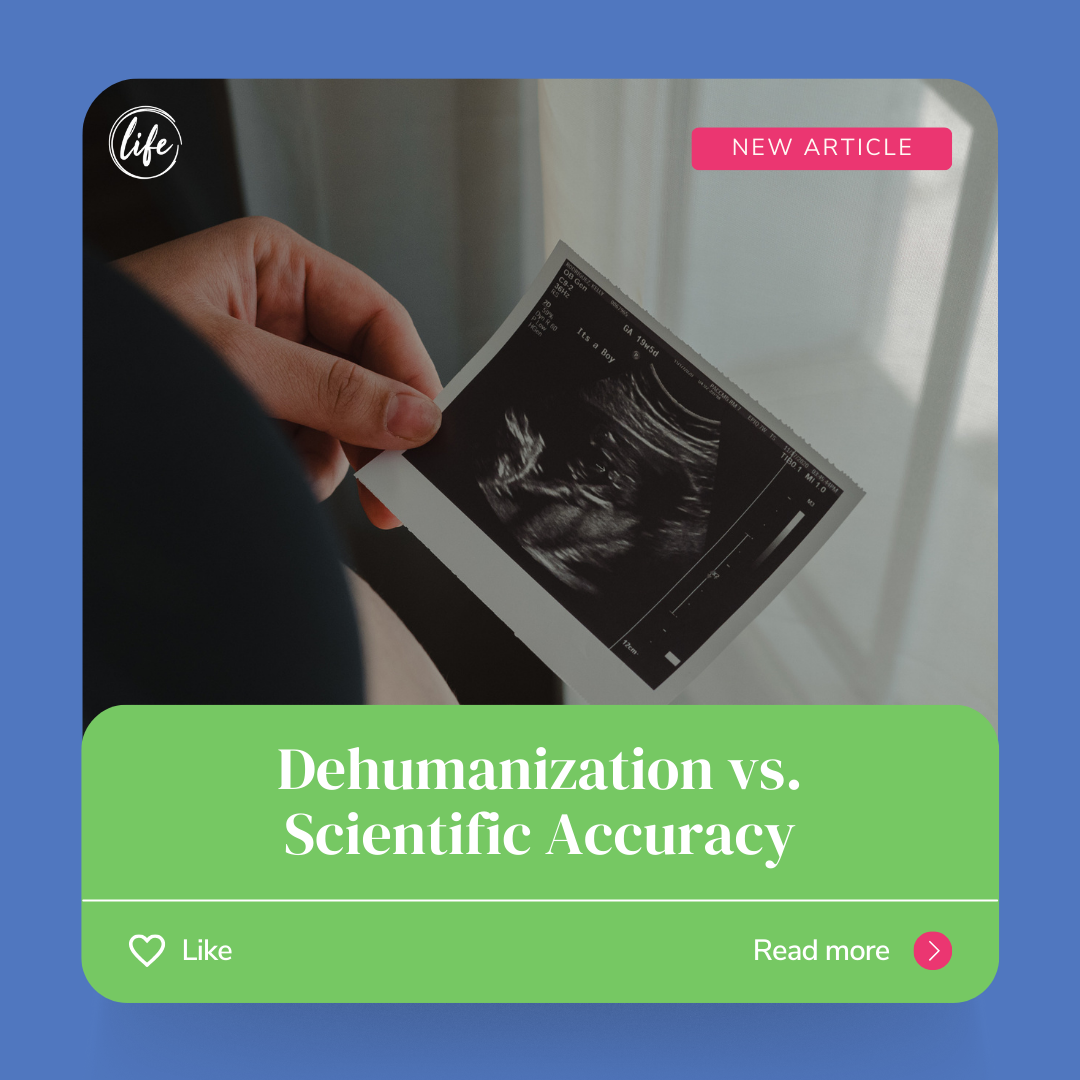
 Choice advocates often use strategic language to dehumanize the unborn and justify abortion in the name of “scientific accuracy.” But how scientifically accurate are these terms? Let’s break down some commonly used terms and their impact:
Choice advocates often use strategic language to dehumanize the unborn and justify abortion in the name of “scientific accuracy.” But how scientifically accurate are these terms? Let’s break down some commonly used terms and their impact:
“Clump of cells”
Most commonly, choice advocates refer to zygotes and fetuses as merely “clumps of cells.” While it is true that an unborn baby begins as a single cell, it is also true that that single cell contains the full genetic makeup (a 46-chromosome DNA chain) of a human being. With this DNA, the zygote becomes a fetus with 1 billion unique cells. From conception, an unborn baby’s eye color, hair color, sex, etc. have already been determined and they will continue to rapidly grow over the span of 9 months.
From conception until death, a human being will continue to grow, change, and age. A human is a human regardless of the stage of growth. If it is “accurate” to describe a fetus as a “clump of cells”, then perhaps the same is true for an adult human composed of 35 million cells.
“Parasite”
Many choice advocates refer to a fetus as a “parasite” because it relies on its mother for nutrition and survival. Not only is this dehumanizing but scientifically inaccurate. Let’s look at the definition of a “parasite.”
The Oxford Dictionary defines a parasite as: “an organism that lives in or on an organism of another species (its host).” Genetically, the beginning zygote is of the human species; it possesses a full 46-chromosome DNA chain. Therefore, an unborn baby is not a parasite.
In most cases, a baby is not placed in a woman’s womb against her will. When a man and woman have consensual sex, they are also accepting all the potential consequences of those actions, which includes pregnancy. Pregnancy is not a parasitic relationship between host and leech, rather, a consenting woman and her child.
Zygote, blastocyst, embryo, fetus
The terms “zygote”, “blastocyst”, “embryo”, and “fetus” are used to describe specific stages of human development. However, many choice advocates use these terms to create separation between the unborn and born. While these are scientific terms, it is not scientifically accurate to suggest these forms are any less human than a human being existing outside the womb.
Similarly, terms like “infant”, “toddler”, “adolescent”, “teenager”, and “adult” are all used to describe stages of human development.
Size and location do not determine humanity. Terminology does not signify a change in genetic identity. Genetically, there is nothing new added after conception.
Learn more about the various stages of fetal development (conception, first, second, and third trimester) and don’t forget to follow us on social media (Facebook, Instagram, and TikTok).